
EVCO S.p.A. Vcolor 378 | Installer manual ver. 2.0 | Code 144VC378E204
Page 1 of 54
Vcolor 378
Controllers for bread and pizza deck ovens
ENGLISH
INSTALLER MANUAL ver. 2.0
CODE 144VC378E204

EVCO S.p.A. Vcolor 378 | Installer manual ver. 2.0 | Code 144VC378E204
Page 2 of 54
Important
Read this document carefully before installation and before
using the device and take all the prescribed precautions. Keep
this document with the device for future consultation.
Only use the device in the ways described in this document. Do
not use the device as a safety device.
Disposal
The device must be disposed of according to local regulations
governing the collection of electrical and electronic equipment.

EVCO S.p.A. Vcolor 378 | Installer manual ver. 2.0 | Code 144VC378E204
Page 3 of 54
Contents
1 INTRODUCTION ......................................... 4
1.1 Product description ..................................... 4
1.2 Models available and technical features ......... 5
2 MEASUREMENTS AND INSTALLATION ........... 8
2.1 Format features ......................................... 8
2.2 Measurements and installation of the control
module ..................................................... 8
2.3 Measurements of the user interface .............. 8
2.4 Installation of the user interface ................ 10
2.5 Installation precautions ............................. 10
3 ELECTRICAL CONNECTION ........................ 11
3.1 Vcolor 378M electrical connection ............... 11
3.2 Vcolor 378L electrical connection ............... 13
3.3 Vcolor 378M electrical connection in multi-base
mode ...................................................... 15
3.4 Vcolor 378L electrical connection in multi-base
mode ...................................................... 15
3.5 Vcolor 378 electrical connection in multi-kit
mode ...................................................... 16
3.6 Electrical connection with a motorised venting
solenoid valve .......................................... 16
3.7 Precautions for electrical connection ........... 17
4 FIRST-TIME USE ...................................... 18
4.1 First-time use .......................................... 18
5 USER INTERFACE ..................................... 19
5.1 Initial information .................................... 19
5.2 Splash screen .......................................... 19
5.3 STAND-BY screen ..................................... 19
5.4 ON screen ............................................... 19
5.5 Recipe book............................................. 22
5.6 Locked display ......................................... 24
6 “WEEKLY PROGRAMMED SWITCH-ON"
FUNCTION ............................................... 24
6.1 Initial information .................................... 24
6.2 Setting and activating the "Weekly
programmed switch-on" function ............... 24
7 MANAGING LOADS ................................... 25
7.1 Initial information .................................... 25
7.2 Temperature regulation ............................ 25
7.3 Steamer management .............................. 26
7.4 Suction hood management ........................ 27
7.5 Buzzer management ................................. 27
7.6 Electronics compartment fan ..................... 27
7.7 Stand-by/on relay management ................. 27
7.8 Sound relay management ......................... 27
7.9 Reset of type 1/2 burner block ................... 27
8 CONFIGURATION ..................................... 28
8.1 Initial information .................................... 28
8.2 Setting the date and time .......................... 28
8.3 List of alarms ........................................... 28
8.4 Internal values ......................................... 28
8.5 Service ................................................... 28
8.6 Languages ............................................... 28
8.7 Oven cleaning cycle .................................. 28
8.8 Display cleaning ....................................... 29
8.9 USB ........................................................ 29
8.10 Shared power status (if applicable) ............. 29
9 MULTI-BASE CONFIGURATION ................... 29
10 MULTI-KIT CONFIGURATION ...................... 30
11 Centralised management with power shared
between the decks ................................... 30
11.1 Parameters of reported consumption .......... 31
Parameters of reported consumptionErrore. Il
segnalibro non è definito.
11.2 Loads with immediate and non-immediate
activation ................................................ 31
11.3 Distribution strategy of the available power . 31
11.4 Managing networks with shared power ........ 32
12 LIST OF CONFIGURATION PARAMETERS ...... 33
13 ALARM MANAGEMENT ............................... 42
14 CONNECTIVITY ........................................ 44
14.1 Initial information ..................................... 44
14.2 EPoCA cloud platform................................ 45
15 USING THE USB PORT .............................. 46
15.1 Initial information ..................................... 46
15.2 Uploading the recipe settings ..................... 46
15.3 Downloading the recipe settings ................. 46
15.4 Uploading the settings in the configuration
parameters .............................................. 46
15.5 Downloading the settings in the configuration
parameters .............................................. 46
15.6 Uploading CSV files to personalise the graphics,
recipes and languages .............................. 46
16 ACCESSORIES ......................................... 47
16.1 Safety transformer ................................... 47
16.2 Non-optoisolated RS-485/USB serial
interface ................................................. 47
16.3 USB plug for panel installation ................... 47
16.4 Connecting cables .................................... 47
16.5 Buzzer expansion ..................................... 48
16.6 4GB USB flash drive ................................. 48
16.7 EVlinking Wi-Fi RS-485 module .................. 48
16.8 EV3 Web gateway .................................... 48
17 TECHNICAL SPECIFICATIONS .................... 49
17.1 Technical data ......................................... 49

EVCO S.p.A. Vcolor 378 | Installer manual ver. 2.0 | Code 144VC378E204
Page 4 of 54
1 INTRODUCTION
1.1 Product description
Vcolor 378 is a controller for electric bread and pizza deck ovens with a remote touch-screen user interface in 5- or 7-inch glass which
fits in perfectly with the design of the unit. It can control up to 5 decks through an RS-485 network of power boards connected to a single
user interface, which also allows centralised management with power shared between the decks. Centralised management can also be
enabled by connecting control kits (interface + power board), one for each deck and up to a maximum of 5, via the RS-485 serial port.
It manages steam (generation, injection and venting) in both automatic and manual mode and independently regulates the power and
temperature of the top, floor and front heaters. Being able to control the temperature of the front heater is particularly important for
certain baked goods.
The controller has an oven cleaning function which uses pyrolysis, a self-cleaning mechanism that does not require chemical detergents
as food residue is oxidised at high temperature.
The controller can save up to 99 recipes; each recipe can have up to 8 phases, each with independent settings for duration, temperature,
steam injection cycles, venting and suction. Recipes can be compiled in an ODS file (complete with pictures in BMP or GIF format) and
uploaded to the controller using a USB flash drive, thanks to the innovative programmable platform which allows users to customise their
recipes and add new languages. Recipes can also be altered, overwritten and saved directly from the display and two different recipes
can be switched on and off for every day of the week.
Users can interact remotely with their equipment and start up/stop working cycles using the EPoCA® cloud platform with Wi-Fi or Ethernet
connectivity (which also enables alternative or parallel control through MODBUS TCP). For more details, compare all the connectivity
options in the Technical Data table and consult the Management and Monitoring Products/Systems and the Connectivity Products/Devices
sections of our website.

EVCO S.p.A. Vcolor 378 | Installer manual ver. 2.0 | Code 144VC378E204
Page 5 of 54
1.2 Models available and technical features
The table below shows the technical features of the models available.
Vcolor 378 M & L
with J/K thermocouples
Vcolor 378 M & L
with Pt 100 2 wires
Power supply
Control module 12 Vac 12 Vac
User interface Powered by the control module Powered by the control module
Analogue inputs (J/K or Pt100)
Top probe (activated as chamber probe if
regulation is by single analogue input with
power distributed between the top and floor)
J/K thermocouples Pt 100 2 wires
Floor probe (deactivated if regulation is by
single analogue input) J/K thermocouples Pt 100 2 wires
Steam probe J/K thermocouples Pt 100 2 wires
Front probe J/K thermocouples Pt 100 2 wires
Digital inputs (for NO/NC contact)
Power consumption (230 Vac) • •
Thermal switch (230 Vac) • •
Type 1/2 burner block (230 Vac) • •
Door switch • •
Enable steam injection • •
Switch off device • •
Energy saving • •
Digital outputs (electro-mechanical
relays; A res. @ 250 Vac)
Configurable k1 (default top heaters) 5 A 5 A
Configurable k2 (default stand-by/on) 5 A 5 A
Configurable k3 (default floor heater) 5 A 5 A
Configurable k4 (default floor front heater) 5 A 5 A
Configurable k5 (default chamber light) 5 A 5 A
Configurable k6 (default venting) 5 A 5 A

EVCO S.p.A. Vcolor 378 | Installer manual ver. 2.0 | Code 144VC378E204
Page 6 of 54
Configurable k7 (default steam generation) 5 A 5 A
Configurable k8 (default steam injection) 5 A 5 A
Configurable k9 (default suction hood) 8 A 8 A
Configurable k10 (default electronics
compartment fan) 5 A 5 A
Configurable k11 (default sound) 5 A 5 A
Configurable k12 (default reset of burner block
1/2) 5 A 5 A
Configurable k13 (default top front heater) 8 A 8 A
Communications ports
RS-485 MODBUS • •
USB • •
Connectivity
RS-485 MODBUS RTU (built-in) • •
Wi-Fi EPoCA/MODBUS TCP (optional through
the EVlinking Wi-Fi module powered by
controller)
• •
Ethernet EPoCA/MODBUS TCP (optional
through EV3 Web gateway) • •
Other features
"Cooking timer" function • •
"Rapid heating" function • •
Clock • •
Alarm buzzer • •
Independent management of the power
delivered to top and floor • •
Independent management of the top and floor
temperatures • •
"Weekly programmed switch-on" function • •
"Programmes" function • •
"Energy-saving" function • •

EVCO S.p.A. Vcolor 378 | Installer manual ver. 2.0 | Code 144VC378E204
Page 7 of 54
For more information, see section 1517 “TECHNICAL SPECIFICATIONS”.
The table below lists the purchasing codes of the available models:
Purchasing codes
With J/K thermocouples
Vcolor 378 M (control module + 5” user interface kit):
EVCMC37DJ2E (flush fit installation)
EVCMC37DJ2EF (semi-recessed installation)
Vcolor 378 L (control module + 7” user interface kit):
EVCLC37DJ2E (flush fit installation)
EVCLC37DJ2EF (semi-recessed installation)
Vcolor 378 M&L (additional control modules)
EVCLP37DJ2E
EVCLP37DJ2E01 (with 3 digital outputs for solid-state relay command; 12 Vdc, 15
mA max)
With Pt 100 2 wires
Vcolor 378 M (control module + 5” user interface kit):
EVCMC37DC2E (flush fit installation)
EVCMC37DC2EF (semi-recessed installation)
Vcolor 378 L (control module + 7” user interface kit):
EVCLC37DC2E (flush fit installation)
EVCLC37DC2EF (semi-recessed installation)
Vcolor 378 M&L (additional control modules)
EVCLP37DC2E
For more models, contact the EVCO sales network.

EVCO S.p.A. Vcolor 378 | Installer manual ver. 2.0 | Code 144VC378E204
Page 8 of 54
2 MEASUREMENTS AND INSTALLATION
2.1 Format features
The control module is available in a split version with an open frame board. User interfaces are available in 5 or 7-inch versions for vertical
operation and have capacitive colour TFT touch-screen graphic displays.
2.2 Measurements and installation of the control module
Measurements are indicated in mm (in). Installation of the control module is on a flat surface with spacers.
2.3 Measurements of the user interface
The user interface is available in the model for flush installation and in the model for semi-recessed frontal installation. Measurements
vary based on the model as shown below in mm (in).
Vcolor 378 M

EVCO S.p.A. Vcolor 378 | Installer manual ver. 2.0 | Code 144VC378E204
Page 9 of 54
Vcolor 378 L

EVCO S.p.A. Vcolor 378 | Installer manual ver. 2.0 | Code 144VC378E204
Page 10 of 54
2.4 Installation of the user interface
Depending on the model, installation can be:
- flush, from behind the panel with threaded studs (not provided) welded to hold it in place;
- semi-recessed, from the front of the panel with spring clips to hold it in place.
2.5 Installation precautions
- Ensure that the working conditions for the device (operating temperature, humidity, etc.) are within the set limits. See section
17 “TECHNICAL SPECIFICATIONS”
- Do not install the device close to heat sources (heaters, hot air ducts, etc.), equipment with a strong magnetic field (large
diffusers, etc.), in places subject to direct sunlight, rain, damp, excessive dust, mechanical vibrations or shocks
- Any metal parts close to the control module must be far enough away so as not to compromise the safety distance
- In compliance with safety regulations, the device must be installed properly to ensure adequate protection from contact with
electrical parts. All protective parts must be fixed in such a way as to need the aid of a tool to remove them
- Ensure that the thermocouple is properly insulated from contact with metal parts or use already insulated thermocouples.

EVCO S.p.A. Vcolor 378 | Installer manual ver. 2.0 | Code 144VC378E204
Page 11 of 54
3 ELECTRICAL CONNECTION
3.1 Vcolor 378M electrical connection
The diagram below shows the electrical connection of the control device with a 5-inch user interface.

EVCO S.p.A. Vcolor 378 | Installer manual ver. 2.0 | Code 144VC378E204
Page 12 of 54
N.B.:
- The USB communications port makes it possible to upload and download the device settings and personalise the graphics,
recipes and languages using an ordinary USB flash drive (see section 14. USING THE USB PORT).
- The RS-485 MODBUS communications port enables connection to the Parameters Manager set-up software or to the modules
for Wi-Fi or Ethernet connectivity to manage the unit using the EPoCA cloud platform or MODBUS TCP systems (see section 13.
CONNECTIVITY).

EVCO S.p.A. Vcolor 378 | Installer manual ver. 2.0 | Code 144VC378E204
Page 13 of 54
3.2 Vcolor 378L electrical connection
The diagram below shows the electrical connection of the control device with a 7-inch user interface.

EVCO S.p.A. Vcolor 378 | Installer manual ver. 2.0 | Code 144VC378E204
Page 14 of 54
N.B.:
- The USB communications port makes it possible to upload and download the device settings and personalise the graphics,
recipes and languages using an ordinary USB flash drive (see section 14. USING THE USB PORT).
- The RS-485 MODBUS communications port enables connection to the Parameters Manager set-up software or to the modules
for Wi-Fi or Ethernet connectivity to manage the unit using the EPoCA cloud platform or MODBUS TCP systems (see section 13.
CONNECTIVITY).

EVCO S.p.A. Vcolor 378 | Installer manual ver. 2.0 | Code 144VC378E204
Page 15 of 54
3.3 Vcolor 378M electrical connection in multi-base mode
The diagram below shows the electrical connection of an RS-485 network with up to 5 control devices with a single 5- or 7-inch user
interface.
3.4 Vcolor 378L electrical connection in multi-base mode
The diagram below shows the electrical connection of an RS-485 network with up to 5 control devices with a single 5- or 7-inch user
interface.

EVCO S.p.A. Vcolor 378 | Installer manual ver. 2.0 | Code 144VC378E204
Page 16 of 54
3.5 Vcolor 378 electrical connection in multi-kit mode
3.6 Electrical connection with a motorised venting solenoid valve
The diagram below shows an example of connection with a motorised venting solenoid valve.
The diagram below shows operation with the parameters set as follows:
u2 = 140 (14 seconds) pause time for cam to run
u3 = 10 (1 second) motor activation time for short milling output
u4 = 30 (3 seconds) motor activation time for long milling output

EVCO S.p.A. Vcolor 378 | Installer manual ver. 2.0 | Code 144VC378E204
Page 17 of 54
3.7 Precautions for electrical connection
- Do not use electric or pneumatic screwdrivers on the terminal blocks of the device
- If the device is moved from a cold to a warm place, the humidity may cause condensation to form inside. Wait about an hour
before switching on the power
- Make sure that the supply voltage, electrical frequency and power of the device correspond to the local power supply. See
section 1517 “TECHNICAL SPECIFICATIONS”
- Disconnect the device from the power supply before doing any type of maintenance
- Locate the power cables as far away as possible from those for the signal
- To reduce reflections on the signal transmitted along the cables connecting the user interface to the control module, it is
necessary to fit a termination resistor
- Ensure that the thermocouple is properly insulated from contact with metal parts or use already insulated thermocouples
- For repairs and for further information on the device, contact the EVCO sales network.

EVCO S.p.A. Vcolor 378 | Installer manual ver. 2.0 | Code 144VC378E204
Page 18 of 54
4 FIRST-TIME USE
4.1 First-time use
Proceed as follows:
1. Install the device as shown in section 2 “INSTALLATION”, taking all the precautions mentioned in paragraph 2.3 “Installation
precautions”.
2. Make the electrical connection as shown in section 3 “ELECTRICAL CONNECTION”.
3. Connect the power supply to the device: the device will show a splash screen for some seconds.
4. Set the time, date and day of the week. See section 8 “CONFIGURATION”.
5. Configure the device as shown in section 10 “LIST OF CONFIGURATION PARAMETERS”.
The following table describes the main configuration parameters. The parameters are listed in the recommended configuration order.
PARAM. DESCRIPTION FACTORY SETTING
P0
type of probe
0 = J thermocouple
1 = K thermocouple
2 = Pt 100
0
P1
unit of measurement
0 = °C
1 = °F
N.B.: passing from °C to °F automatically adapts the parameter values; please note that this
parameter does not affect recipe configuration
0
P2
type of operation
0 = WITH 1 ANALOGUE INPUT (chamber probe, with separate management of the top and
floor heating by setting the percentage of power delivered to the top and floor heaters)
1 = WITH 2 ANALOGUE INPUTS (top and floor probes, with separate temperature
management for the top and the floor by setting 2 different temperature setpoints: one
for the top heaters and one for the floor heaters)
0
P3
mode to enable steam injection activation
0 = MANUAL – steam injection will be enabled if the steam generator is switched on
1 = REMOTE – steam injection will be enabled if the steam generator is switched on and if the
multi-purpose input is activated (until the input is deactivated; only if i5 = 1)
1 = THERMOSTATIC – steam injection will be enabled if steam temperature regulation is
activated and the steam temperature is above t1 - t3
3 = DISABLED – steam injection and generation are disabled and the appropriate menu is
NOT visible
0
P4
front probe present
0 = no
1 = yes
0
u1
load managed by venting output
0 = ON/OFF SOLENOID VALVE
1 = MOTORISED SOLENOID VALVE - with this setting parameters u2, u3 and u4 are relevant
0
e2
oven configuration
0 = Single or multi-kit regulator (max. 5 connected to RS-485) for the shared power option
1 = Multi-base regulator (1 user interface with max. 5 power boards connected in a
network)
0
Next check the remaining parameters are appropriately set; see section 10 “LIST OF CONFIGURATION PARAMETERS”.

EVCO S.p.A. Vcolor 378 | Installer manual ver. 2.0 | Code 144VC378E204
Page 19 of 54
5 USER INTERFACE
5.1 Initial information
The controller has the following operating modes:
• “OFF”: no power to the device; the display and all
the loads are switched off.
• “STAND-BY”: the device is powered, the display is on
and all the loads are switched off (except the
chamber light if activated manually).
• “ON”: the device is powered and the display is on;
the loads may be switched on, depending on machine
status.
5.2 Splash screen
When the control module is powered up, it defaults to the EVCO
splash screen for a few seconds.
5.3 STAND-BY screen
After the splash screen, the user interface displays the stand-
by screen according to the configuration of parameter e2.
e2 = 0 e2 = 1
Briefly press the ON/OFF key to switch the device on.
N.B.: OFF status can be forced by activating input id2 (see
parameter i7) and can be linked to a relay output configured as
“Stand-by/On” (uxc=10).
If the "weekly programming" function is enabled by the
parameter (C5 = 1), the Planning key will also be displayed,
making it possible to set weekly programmed switch-ons (see
section 6).
The “Configuration” key
gives access to set the date and time, configure parameters,
see the list of alarms (see section 8 “CONFIGURATIONS” for a
detailed description of all the possible options).
The “Chamber Light” key allows the user to switch the chamber
light on and off manually, even when the controller is in stand-
by.
5.4 ON screen
5.4.1 Initial information
Depending on the construction features of the oven, and
according to whether it has 1 or 2 analogue inputs, the
controller can be regulated in two different ways that have to
be correctly set with parameter P2:
P2 = 0 1 analogue input (chamber probe)
P2 = 1 2 analogue inputs (top probe and floor probe)
Control of the front heater can also be added and is regulated
in two different ways:
• 1 dedicated analogue input (P4=1 in configurations with
r12=0, 1, 3, 4, 5)
• by setting a percentage relative to the working percentage
of the top heater (P4=0 with configuration r12=2); the
working percentage, set by parameters r16 and r17, will
always be calculated considering the set working
percentage of the top heater as the maximum value.
5.4.2 Oven regulated by one chamber probe
In this type of oven, separate temperature management for the
top and the floor is obtained by setting the percentage of power
delivered above (top) and below (floor). The percentages can
be set individually and are not affected by each other. The
following screen is displayed:

EVCO S.p.A. Vcolor 378 | Installer manual ver. 2.0 | Code 144VC378E204
Page 20 of 54
The settings for ovens with one chamber probe are as follows:
• chamber setpoint (shown in smaller type to the side
of the chamber temperature)
• top power
• floor power
• cooking timer
• recipe selection
• mode (economy or rapid)
• venting
• hood
• chamber light
• steam generator
• steam injection
• stand-by
5.4.3 Oven regulated by one chamber probe + one
probe for floor front
This configuration differs from the previous one as it includes a
dedicated probe (P4=1) to manage the front heater. The
following screen is displayed:
On the basis of parameter r12, the temperature of the front can
be:
- absolute (r12=0): in this case parameters r13, r14 and r15
are relevant
- relative to the chamber setpoint (r12=1): in this case the front
setpoint cannot be changed but is considered the same setpoint
as the chamber; a relay must also be configured as the front
floor heater (uxc=3).
5.4.4 Oven regulated by one chamber probe + floor
front % adjutment
If the oven is regulated by a single probe and the front heater
is not controlled by a temperature probe but a percentage
relative to the top cycle time (P4=0, r12=2, in this case
parameters r16 and r17 are relevant), the following screen is
displayed:
5.4.5 Oven regulated by one chamber probe + one
probe for top/floor front
This oven configuration is used when there is a chamber probe
(P2=0) and a front probe (P4=1), with the chamber and front
setpoints set individually but the percentages of the power
delivered to the top/floor of the front the same as those
delivered to the top/floor of the chamber (r12=5).
Four relay outputs must be configured in this setting: chamber
top heater (uxc=1), chamber floor heater (uxc=2), front floor
heater (uxc=3) and front top heater (uxc=13).
5.4.6 Oven regulated by two probes (top and floor)
In this type of oven there are two probes which are independent
of the top temperature and the floor temperature. Separate
temperature management for the top and floor is obtained by
setting two different temperature setpoints: one for the top and
one for the floor. The following screen is displayed:
Page is loading ...
Page is loading ...
Page is loading ...
Page is loading ...
Page is loading ...
Page is loading ...
Page is loading ...
Page is loading ...
Page is loading ...
Page is loading ...
Page is loading ...
Page is loading ...
Page is loading ...
Page is loading ...
Page is loading ...
Page is loading ...
Page is loading ...
Page is loading ...
Page is loading ...
Page is loading ...
Page is loading ...
Page is loading ...
Page is loading ...
Page is loading ...
Page is loading ...
Page is loading ...
Page is loading ...
Page is loading ...
Page is loading ...
Page is loading ...
Page is loading ...
Page is loading ...
Page is loading ...
Page is loading ...
-
 1
1
-
 2
2
-
 3
3
-
 4
4
-
 5
5
-
 6
6
-
 7
7
-
 8
8
-
 9
9
-
 10
10
-
 11
11
-
 12
12
-
 13
13
-
 14
14
-
 15
15
-
 16
16
-
 17
17
-
 18
18
-
 19
19
-
 20
20
-
 21
21
-
 22
22
-
 23
23
-
 24
24
-
 25
25
-
 26
26
-
 27
27
-
 28
28
-
 29
29
-
 30
30
-
 31
31
-
 32
32
-
 33
33
-
 34
34
-
 35
35
-
 36
36
-
 37
37
-
 38
38
-
 39
39
-
 40
40
-
 41
41
-
 42
42
-
 43
43
-
 44
44
-
 45
45
-
 46
46
-
 47
47
-
 48
48
-
 49
49
-
 50
50
-
 51
51
-
 52
52
-
 53
53
-
 54
54
Evco EVCMC37DJ2E Installation guide
- Type
- Installation guide
- This manual is also suitable for
Ask a question and I''ll find the answer in the document
Finding information in a document is now easier with AI
Related papers
-
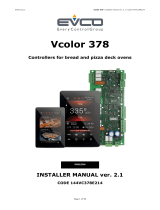 Evco EVCLC37DJ2E Installation guide
Evco EVCLC37DJ2E Installation guide
-
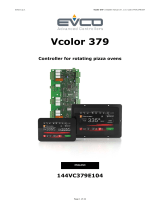 Evco EVCLC3ADC2E Installation guide
Evco EVCLC3ADC2E Installation guide
-
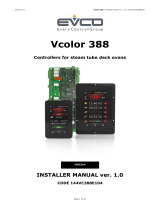 Evco EVCLC38FJ2E Installation guide
Evco EVCLC38FJ2E Installation guide
-
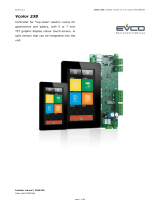 Evco Vcolor 338 Installer Manual
Evco Vcolor 338 Installer Manual
-
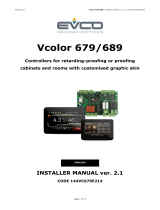 Evco EVCMC679N9EH Installation guide
Evco EVCMC679N9EH Installation guide
-
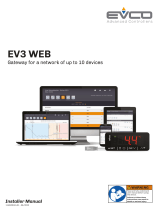 Evco EV3 WEB User manual
Evco EV3 WEB User manual
-
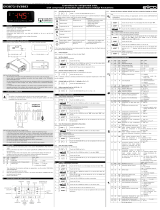 Evco EV3B73N9 Instructions Sheet
Evco EV3B73N9 Instructions Sheet
-
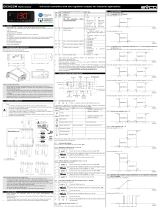 Evco EV3423M9 Instructions Sheet
Evco EV3423M9 Instructions Sheet
-
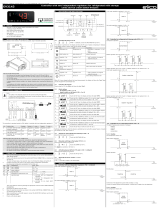 Evco EV3143 User manual
Evco EV3143 User manual
-
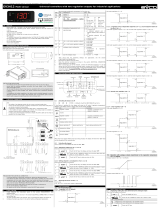 Evco EV3412M9 Instructions Sheet
Evco EV3412M9 Instructions Sheet
Other documents
-
CAME TH/500 Installation guide
-
CAME TA/500 Installation guide
-
CAME TH/400 Installation guide
-
CAME TH/500 Installation guide
-
Full Gauge Controls TO-712B User manual
-
aerauliqa CTRL-HS Installation guide
-
Full Gauge Controls TO-712F Owner's manual
-
CAME TH/700 Installation guide
-
Full Gauge Controls TO-712F User manual
-
Full Gauge Controls TO-711F User manual































































